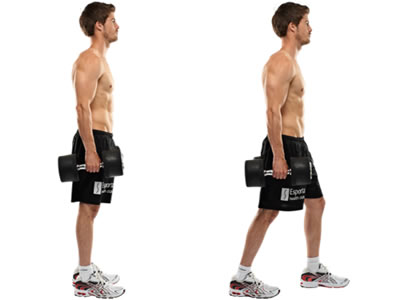
Belly Fat Reality
Belly fat is a common concern for many individuals aiming to achieve a healthier and more aesthetically pleasing body. This article explores the realities of belly fat reduction, offering detailed insights, practical advice, and scientifically-backed methods to help you on your journey.
Understanding Belly Fat
Belly fat, also known as abdominal fat, is not just a superficial concern. There are two types of belly fat: subcutaneous fat (the fat under your skin) and visceral fat (the fat that surrounds your organs). Visceral fat is particularly dangerous as it has been linked to various health issues such as heart disease, type 2 diabetes, and certain cancers.
The Science Behind Belly Fat Accumulation
Belly fat accumulates due to a combination of factors including poor diet, lack of exercise, stress, and genetic predisposition. A diet high in sugars and unhealthy fats contributes significantly to the accumulation of fat in the abdominal area. Additionally, stress triggers the release of cortisol, a hormone that encourages fat storage in the belly.
Effective Dietary Changes
1. Adopt a Balanced Diet
To reduce belly fat, it’s crucial to adopt a balanced diet rich in whole foods. Incorporate plenty of vegetables, fruits, lean proteins, and whole grains. Avoid refined sugars and processed foods as they contribute to belly fat accumulation.
2. Increase Protein Intake
Protein plays a vital role in belly fat reduction. It helps in building muscle mass, which in turn increases your metabolic rate, aiding in fat burning. Incorporate sources of lean protein such as chicken, fish, beans, and legumes into your diet.
3. Healthy Fats are Essential
Contrary to popular belief, not all fats are bad. Healthy fats, such as those found in avocados, nuts, seeds, and olive oil, can actually help reduce belly fat by improving your metabolic rate and reducing inflammation.
4. Cut Down on Sugars and Refined Carbs
Sugars and refined carbohydrates are the main culprits behind belly fat. These cause spikes in blood sugar levels, leading to increased fat storage. Opt for complex carbohydrates like quinoa, brown rice, and oats.
Incorporating Effective Exercise Regimens
1. Cardiovascular Exercises
Cardio exercises are highly effective in burning calories and reducing belly fat. Activities such as running, cycling, swimming, and brisk walking should be incorporated into your routine. Aim for at least 150 minutes of moderate-intensity or 75 minutes of high-intensity cardio per week.
2. Strength Training
Strength training helps build muscle, which boosts your metabolism and aids in burning fat. Incorporate exercises such as weight lifting, resistance band workouts, and bodyweight exercises like push-ups and squats into your routine at least three times a week.
3. High-Intensity Interval Training (HIIT)
HIIT workouts involve short bursts of intense activity followed by rest or low-intensity exercise. These workouts are incredibly effective for burning fat, including belly fat. A typical HIIT workout might include sprints, jump squats, and burpees.
The Role of Lifestyle Changes
1. Manage Stress Levels
Stress management is crucial for reducing belly fat. Practice stress-relief techniques such as yoga, meditation, deep breathing exercises, or even hobbies that you enjoy. Lowering stress levels helps reduce the secretion of cortisol, thus preventing fat accumulation in the belly area.
2. Ensure Adequate Sleep
Quality sleep is often underestimated in its role in belly fat reduction. Aim for 7-9 hours of sleep per night. Lack of sleep can disrupt your metabolism and increase cravings for unhealthy foods, leading to fat accumulation.
3. Stay Hydrated
Hydration is key to maintaining a healthy metabolism and aiding in fat loss. Drink plenty of water throughout the day. Water helps in the digestion and absorption of nutrients and can also help control hunger.
Supplements and Their Role
1. Green Tea Extract
Green tea extract is known for its fat-burning properties. It contains antioxidants called catechins, which can boost metabolism and increase fat burning, especially when combined with exercise.
2. Probiotics
Probiotics help maintain a healthy gut, which is essential for overall health and weight management. A balanced gut microbiota can help in reducing belly fat by improving digestion and reducing inflammation.
3. Omega-3 Fatty Acids
Omega-3 supplements, such as fish oil, can help reduce inflammation and fat storage. They also promote heart health, which is often compromised by excess belly fat.
Conclusion
Reducing belly fat is a multifaceted process that requires a holistic approach encompassing diet, exercise, lifestyle changes, and possibly supplements. By adopting a balanced diet, incorporating effective exercise routines, managing stress, ensuring adequate sleep, and staying hydrated, you can effectively reduce belly fat and improve your overall health. Remember, consistency and dedication are key to achieving lasting results.
